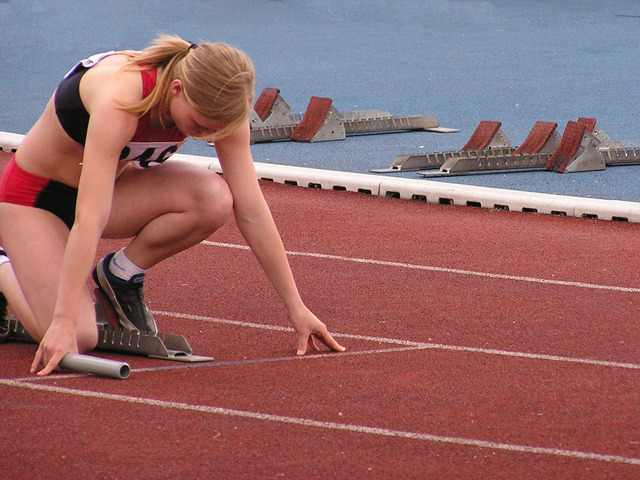One of the things I frequently encounter as I teach the Alexander Technique to wind instrumentalists and singers is how widely misunderstood breathing is. It’s not uncommon for me to give a lesson to someone who sings or plays professionally who is still unclear as to what actually happens in the breathing process.
I’m talking here mostly about basic anatomical and physiological misconceptions. Some of these misconceptions are a result of ignorance (never really taking the time to study and understand the science of respiration). Others are inaccuracies (and more than a few myths!) that have been handed down to them by previous teachers (who themselves never took the time to understand the science). Among the most common of these misconceptions in my teaching experience:
- Your lungs are located in the middle part of your torso, toward the front, near your belly. In truth, your lungs are located more towards the back of your torso, and higher up (the top of your lungs is actually slightly higher up than your collar bones.
- Your diaphragm moves forward and back (the way your belly moves in and out). In truth, your diaphragm moves on the vertical plane (up and down). Your belly moving forward and back is simply displacement of the abdominal content as you breathe.
- You need to support the airstream on the exhalation by pushing from the diaphragm. In truth, your diaphragm is actually releasing on the exhalation, so you can’t be pushing from it. The tension necessary to support the breath comes from several different muscle groups in the torso (including back muscles!)
- Your upper ribcage and chest should be still when you breath; all the movement should be down in your abdominal area. In truth, your entire rib cage needs to move as you breath. It is the expansion of the rib cage (in conjunction with the movement of the diaphragm) that increases the internal dimensions of the thorax, which causes the inhalation.
- You need to completely empty your lungs (again, by “pushing” from the diaphragm) before you inhale again. In truth, you don’t ever want to try to completely empty your lungs. Trying to do so just interferes with the coordination of your breathing. A minimum atmospheric pressure between your lungs and your external environment must be maintained at all times.
- Your lungs expand because you fill them with air. In truth, it’s the opposite: You fill yourself with air as a result of your lungs expanding ( a vacuum, like a bellows).
- You need to strengthen your muscles to meet the breathing needs of playing a wind instrument (or singing). In truth, you need to improve the coordination of your breathing.
And there are more. The problems arise when you believe these misconceived ideas to be true, and attempt to breath in accordance to them: excessive neck and jaw tension; stiff shoulders and arms; noisy and distracting (in recording or live performance) inhalation; mal-coordinated (and thus more limited) inhalation; excessive use and tension of the abdominal muscles, etc.
If you play a wind instrument or sing, it is absolutely imperative that you have an accurate understanding of breathing. If you teach wind instrumentalists and/or singers, it is your duty and responsibility to make sure your students are not misapprehending the breathing process.
Recently I purchased an excellent tool to help my students to better understand breathing, and I would like to tell you a little bit about it and recommend it to you.
It’s called Jessica Wolf’s Art of Breathing: Rib Animation DVD. It’s a brief, yet clear and thorough visual representation of how breathing actually works.
Jessica Wolf is considered one of today’s leading experts on breathing. She is a certified Alexander Technique teacher, and has also studied extensively under the revolutionary breathing coordination pioneer, Carl Stough. She also teaches her Art of Breathing certification courses as post-graduate training for Alexander Technique teachers. I have immense respect for her knowledge and skill.
Through beautiful animation and easy to understand words, she starts by showing how the ribs and spine function together (how they move) in the breathing process. Next comes the diaphragm: where it’s located, it’s various structures, how it moves, etc. Then comes the abdominal organs in relation to this movement, and finally all the other muscles that are involved in respiration (introduced one at a time).
Besides its clarity and simplicity, one of the other great features of this presentation is that each new anatomical element (e.g, bones of the spine, ribs, pelvis) that is introduced is easily understood in relation to the previous elements (e.g., the diaphragm) . So easy to comprehend. Nothing is left for vague interpretation or misunderstanding.
I’ve been using this DVD in my Alexander Technique classes at the American Musical and Dramatic Academy in Los Angeles, with excellent results. In a very short period of time, my students are able to de-mystify many of the misconceptions that are holding them back from better breathing.
The word I would most use to describe this brief, but thorough presentation is efficiency. There is nothing but the essential information (that need to be known and understood!) Watch it several times. Memorize it. If you teach, you’ll find that you’ll be able to convey breathing principles so much more effectively to your students.
Here’s a link (Amazon.com) to make a purchase.
If you really want to deepen your understanding of breathing, I also recommend Jessica Wolf’s Art of Breathing: Collected Articles.
If you play a wind instrument or sing, a little bit of (accurate) information about your most vital physical function can go a long way to improving how you perform (and teach!) Best wishes.


